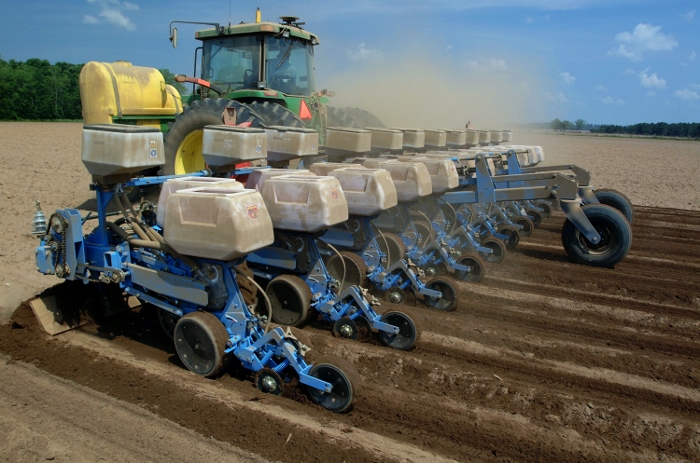
Total variable costs for a crop are what it costs to plant, grow, harvest, and market the crop. Producers should calculate their cost of production to help them calculate the market prices and/or yields they needed to cover their variable costs or “breakeven” for the year. Credit: UF/IFAS Archive
Source: Southern Ag Today: Farming to Breakeven in 2024, written by: Amanda Smith, UGA Extension Economist
With an entire month of the new year behind us, meeting season is in full swing. This season is a time when many agricultural economists get the opportunity to provide market outlooks for the upcoming year for the commodities producers grow and the inputs used to grow them. Last week, a producer approached me at the end of one meeting and commented that it appears like they may be “farming to breakeven in 2024.” That comment gave me an idea for a teachable moment on planting decisions and variable costs.
Producers’ decisions on what they plant are based on a variety of factors including crop rotation, yield history, expected market prices, estimated input costs, weather expectations, and availability of credit. Planting decisions are a short-run decision (i.e. decisions that impact the current crop year). On the other hand, long-run decisions impact multiple years (i.e. investing in irrigation equipment). When making decisions in the short-run, it is important to cover total variable costs. Total variable costs for a crop are what it costs to plant, grow, harvest, and market the crop. Producers should calculate their cost of production to help them calculate the market prices and/or yields they need to achieve to cover their variable costs.
–
Calculating Breakeven
Given a producer is able to estimate their cost of production, there are two ways to calculate breakeven. The first is through calculating the price needed to breakeven. Breakeven price can be calculated through the following formula:
Breakeven Price per Unit of Yield = Total Variable Cost per Acre/Expected Yield per Acre
Imagine a producer in Georgia who plans to rent irrigated cropland and grow cotton on that rented land. The producer downloaded the 2024 Irrigated Cotton enterprise budget from the University of Georgia Extension web page to help them estimate the total variable cost at $679 per acre. They are also aware that the Georgia state average cash land rent for irrigated cropland was $234 per acre last year, according to the USDA National Agricultural Statistics Service. With the land rent added, total variable costs are estimated to be $913 per acre. Based on historical production on this land, the producer expects an irrigated cotton yield of 1,200 pounds per acre. The calculation for the breakeven price follows:
$913 per acre / 1,200 pounds per acre = $0.76 per pound
The producer will need to average of $0.76 per pound to breakeven on a projected yield of 1,200 pounds per acre on the rented irrigated land.
–
The second way to calculate breakeven is through yield. Breakeven yield can be calculated through the following formula:
Breakeven Yield per Acre = Total Variable Cost per Acre/Expected Price per Unit of Yield
The same producer decides to plug in the harvest time futures price for cotton, adjusted for basis, for the expected price. As of the writing of this article, Dec24 cotton was trading around $0.805 per pound. The producer decides to use $0.775 per pound (Dec24 adjusted lower for local basis). The calculation for the breakeven yield follows:
$913 per acre / $0.775 per pound = 1,178 pounds per acre
The producer will need an average yield of 1,178 pounds per acre to breakeven at a price of $0.775 per pound on the cotton grown on that rented land.
Individual producers should keep in mind that their variable costs and cash land rents may differ. Producers are encouraged to utilize tools like enterprise budgets to help them estimate their cost of production, breakeven prices, and breakeven yields. Understanding breakeven prices and yields can aid producers in management and marketing for the upcoming production season.
–
Sources/Resources:
Liu, Y., A.R. Smith, & G.A. Hancock. 2024 Irrigated Cotton Row Crop Enterprise Budget
–
USDA National Agricultural Statistics Service, US and States Cash Land Rents Survey Results
- Where Did That Weed Come From? The Importance of Weed Management Practices and Timings - December 5, 2025
- Sustainable U.S. Peanuts Kicks Off 2025 Crop Enrollment - December 5, 2025
- Grant Opportunity Available to Attend American Forage & Grassland Council Conference, Ashville – January 12-15 - December 5, 2025
